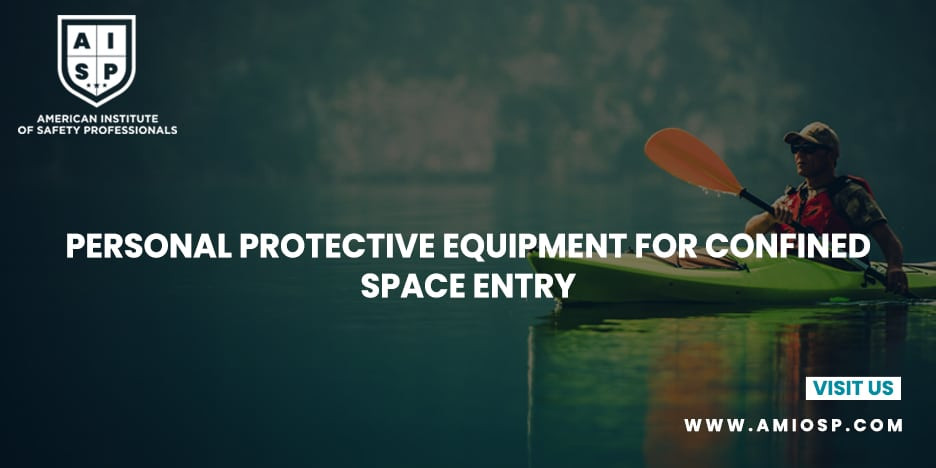Introduction:
When working in confined spaces, it is crucial to prioritize
the safety and well-being of workers. Personal Protective Equipment (PPE) plays
a vital role in protecting workers from potential hazards in confined spaces.
This blog post aims to provide a comprehensive understanding of the importance
of PPE for confined space entry and highlight the specific types of PPE that
should be utilized to ensure worker safety.
- The
Significance of PPE for Confined Space Entry:
Personal Protective Equipment is a crucial aspect of
confined space entry safety. It serves as the last line of defense against
potential hazards that workers may encounter while working in confined spaces.
PPE is designed to protect workers from various risks, including physical,
chemical, and atmospheric hazards. It acts as a barrier between the worker and
potential dangers, minimizing the likelihood of injuries or illnesses.
- Risk
Assessment and PPE Selection:
Before workers enter a confined space, a thorough risk
assessment should be conducted to identify the specific hazards present. Based
on the findings of the risk assessment, appropriate PPE can be selected. The
selection of PPE should consider the nature of the hazards, the level of
protection required, and the comfort and fit of the equipment. It is essential
to choose PPE that is specifically designed for confined space work and meets
the relevant safety standards.
- Common
Types of PPE for Confined Space Entry:
a. Respiratory Protection: In many confined spaces,
atmospheric hazards such as toxic gases or low oxygen levels can be present.
The use of respiratory protection, such as air-purifying respirators or
supplied air respirators, is essential to ensure that workers have a clean and
breathable air supply. Proper training on the use, maintenance, and limitations
of respiratory protection is crucial.
b. Protective Clothing: Protective clothing is necessary to
shield workers from physical and chemical hazards. It may include coveralls,
suits, or specialized garments made from materials that provide protection
against specific substances or physical hazards. The clothing should fit
properly and cover the entire body to minimize the risk of exposure.
c. Head Protection: Head protection, in the form of hard
hats or helmets, should be worn in confined spaces where there is a risk of
falling objects or head injuries due to low clearance. Hard hats should meet
the required safety standards and be properly adjusted to provide effective
protection.
d. Eye and Face Protection: Workers entering confined spaces
may be exposed to flying debris, chemical splashes, or other hazards that can
affect the eyes and face. Safety glasses, goggles, face shields, or combination
units should be worn to provide adequate protection for these vulnerable areas.
e. Hand and Foot Protection: Gloves are essential to protect
workers' hands from cuts, punctures, chemical exposure, or other physical
hazards. The type of gloves required will depend on the specific tasks and
hazards present in the confined space. Additionally, workers should wear
appropriate footwear that provides slip resistance, protection against falling
objects, and insulation from electrical hazards if necessary.
- PPE
Inspection, Maintenance, and Replacement:
PPE should be regularly inspected, properly maintained, and
replaced when necessary to ensure its effectiveness. Workers should be trained
on how to inspect their PPE before each use and report any defects or damage.
Proper storage and cleaning of PPE are also important to maintain its integrity
and functionality.
- Training
and Education:
Proper training on the selection, use, limitations, and
maintenance of PPE is crucial for workers entering confined spaces. They should
be educated on the specific hazards they may encounter, the proper use of PPE,
and emergency procedures related to PPE use. Regular refresher training should
be provided to ensure workers are up to date with best practices and any
changes in PPE requirements.
Conclusion:
Personal Protective Equipment is an indispensable component
of confined space entry safety. By conducting thorough risk assessments,
selecting the appropriate PPE, and providing comprehensive training to workers,
employers can significantly reduce the risks associated with confined space
work. Remember, PPE should never be seen as a substitute for proper engineering
controls or administrative measures. It should be used in conjunction with
other safety measures to create a comprehensive and robust safety culture in
confined space environments.











0 comments
No Comments